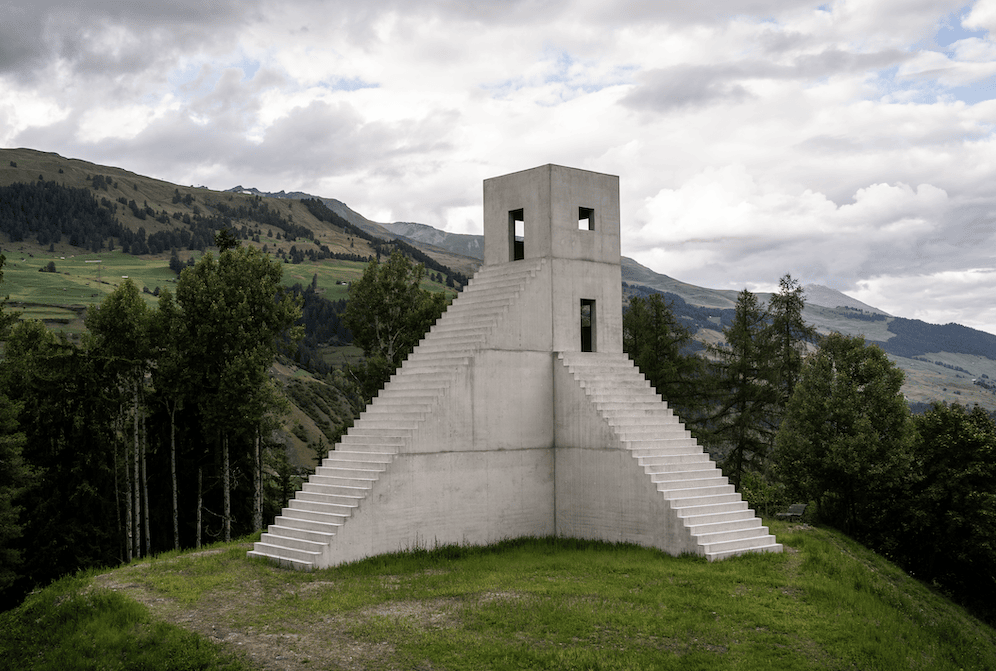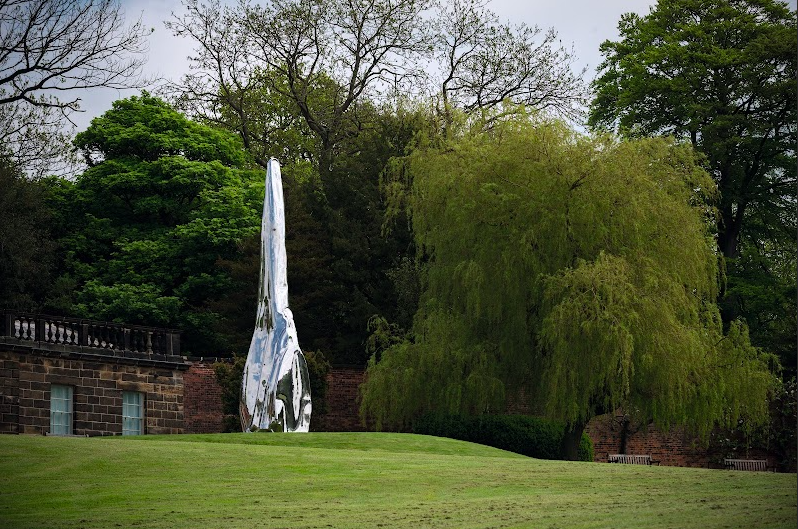A Long-Overdue Survey of the Work of the Notoriously Restless Sculptor, Not Vital, Parses a Body of Work That Resists Easy Classification
He seems to have been born to trot the globe and create spatial experiences of wonder.

‘Not Vital: Sculpture’
By Alma Zevi
Skira / Thames & Hudson, 468 pages
An artist’s artist, the sculptor Not Vital has nonetheless enjoyed an incredibly active five-decade career in sculpture, installation, and his own hybrid form of sculpture and architecture, an art form he calls “scarch.” Mr. Vital is perhaps best known for elegant works infused with sublime paradox and humor. His most recent sculptural buildings, houses built for specific poetical purposes such as observing volcanos or watching sunsets, now dot five continents, intriguing and charming everyone who enters them.
A book-length survey of Mr. Vital’s work has been long overdue. The author Alma Zevi grew up near Mr. Vital’s beloved home village of Sent, Switzerland, and also worked as his studio manager after graduating from the noted Courtauld Institute at London. It’s hard to imagine an author more perfectly positioned for the daunting task of surveying the work of an artist who is notoriously restless, prolific, and difficult to read.
Though at first glance the book appears formatted much like a formal catalog, there is a wealth of written and biographical material. We are first given a bit of history. Born at Sent, a remote Swiss village in the Engadin, Mr. Vital had little access to television and spent his boyhood building structures in his outrageously scenic surroundings. Nature was a primary influence. He also formed a close childhood friendship with the curator and art Historian Max Hugger, who allowed him access to his priceless collection of modern art.

As a youth, he migrated to Paris, where he studied at the experimental University of Vincennes in the late 1960s, shadowed the author Samuel Beckett in the streets, and came into his own as a sculptor, painter, and performance artist. 20 years at New York followed, where he came up among his contemporary art peers during the wildly energetic 1970s and 1980s New York scene.
Stationed at a loft at the corner of Fourth Street and Broadway, Mr. Vital became known for a distinct style that was spare but still reliant on organic form, a paradoxical blend he called “giving minimalism a soul.” Ms. Zevi follows his stylistic evolution from this period onward, starting with his totemic animalistic sculptures, such as Pole Animal, onto his stainless steel and marble works, and his eventual gravitation to site-specific, large-scale architectural works.
As his works have grown in scale, so has Mr. Vital’s appetite for travel. Though he generally spends four months out of the year in his native village, he now has a studio at Beijing where he usually spends half of the year. He also has a location in Niger, where he has built a sculptural house entirely from local materials, and others in Indonesia, Brazil, Chile, the Philippines, and Polynesia. Mr. Vital nomadically wanders the earth like a secret agent, creating enigmatic sculptures and immersive structures that embody his dream-like ethos. He seems to have been born to trot the globe and create spatial experiences of wonder.
Ms. Zevi’s impeccable training as a historian and curator is where she proves most useful in helping readers understand Mr. Vital’s vast and enigmatic output. She is careful to point out the distilled economy of Mr. Vital’s work, a simplicity that appears to have emerged from an exhaustive process of continuous contemplation. Through her careful selection of works, his gradual progression from gnomic plaster sculptures to immersive sculptural structures becomes clearer.
Given that Mr. Vital’s output is so varied, Ms. Zevi wisely resisted the making of a catalogue raisonné, opting instead for a broad survey of his work along chronological and thematic lines. These themes, such as “transformation,” “identity,” “folklore,” and “humor,” are a robust attempt to parse a body of work that has been notoriously slippery and resistant to classification.
It is only fitting that a book for such a unique and peculiar artist as Not Vital be addressed in a book with its own unique format. It’s a dense read but will prove to be extremely rewarding to anyone who wishes to get a glimpse under the sphinx-like surface of Mr. Vital’s provocative and marvel-inducing sculptural practice.

